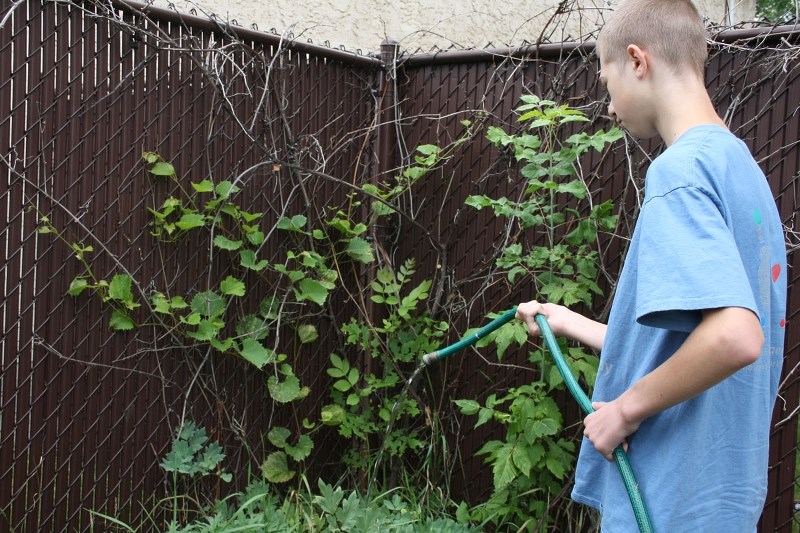It’s a heated (no pun intended) issue throughout the Capital Region, and in fact across Alberta, where nearly a dozen counties have declared states of agricultural disaster because of ongoing drought conditions. Recent weeks have brought some respite with occasional rain, but for many farmers, it’s too little too late, with lost crops and difficult choices to make about whether there’s enough feed to overwinter livestock.
In the city, homeowners aren’t facing loss of livelihood, but maintaining trees, shrubs, lawns and gardens in the dry heat is also presenting challenges. People are asking, ‘should we keep our lawns and gardens green and growing, or simply leave it up to Mother Nature – let it go brown?’ Esthetics aside, most homeowners aren’t willing to leave the investment of time and landscape costs to the mercy of the elements – plants, flowers, trees, shrubs, sod – all costly and worth saving, agree many.
A new trend is springing up as a result of the lack of rain – lawn painting. An Edmonton-area company, Bugs Lawn Care, is doing booming business spray painting a non-toxic, biodegradable, pet-friendly green solution that it says will last all summer. And while it may sound like a funny notion, there’s a waiting list for the service. Chris Kipler of Bugs Lawn Care said he’s hearing a lot of laughs, but when people “see the end product, they’re thinking it’s a viable option.”
If watering with the sprinkler or hose is your way to deal with the drought, the City of St. Albert is continuing its summer-long education campaign reminding residents to reduce water consumption wherever possible. Though the city’s Juliann Burke said there are no official bans in place, residents are being asked to be mindful of water use, with tips posted online and through social media.
Earlier this summer, the city’s three reservoirs (which store water for community use and fire protection), operated below full capacity for a time, but when citizens were called upon to conserve water, the reservoirs returned to optimum levels. “Every little bit counts – one person can make a huge difference in water conservation,” said Mayor Nolan Crouse.
“It’s important to remember that water is a resource that needs to be carefully managed,” said Mike Mellross, manager of the City’s environmental branch. “The recently experienced dry weather reminds us that our access to water is not limitless, and taking sensible and practical measures to conserve and protect it is something we all must do.”
Jim Hole, co-owner of Hole’s Greenhouses and Gardens, advocates the use of water recycling via rain barrels as an ‘eco-friendly and money-saving way to collect rainwater from downspouts to use on vegetable gardens and flower containers. And deep soak at roots with a drip irrigation system. You’ll need less and eliminate water loss from evaporation. Drip irrigation works – and works well. It efficiently distributes water to plants one drop at a time.”
Alberta Urban Garden even recommends using cold coffee or tea from the house during a drought – a way to put every drop to use. In addition, urbangarden.ca suggests using mulch and compost to add nutrients and help hold water in the soil, and using self-watering containers that allow soil to wick water into root systems from below.
As well, gardening experts have long advocated working with nature in the yard, growing what is native to the area (prairie grasses, etc). And in consistently dry or even drought-prone areas of Alberta, experts suggest growing more drought-tolerant plants (grapes, garlic) and less of water-hungry ones (corn, beans). Even planting techniques can help make plants more drought-tolerant. Potatoes and tomatoes (members of the nightshade family) can be planted deeper into the soil, whereby the covered stalk will sprout new roots, leaving the main root ball lower in the soil to access deeper water reserves.
WATER SAVING TIPS
The ‘saving water’ section of the City of St. Albert website offers simple conservation tips, including:
• Water your lawn during the coolest part of the day (early morning or late evening)
• Correctly position a sprinkler, so it doesn’t water the driveway or sidewalk
• Clean your sidewalk or driveway with a boom or brush, rather than a hose.
• Use a watering can or hose with a shut-off nozzle to water just where needed.




